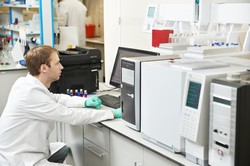Polypyridyl ligands help develop new catalysts
The ability to build inorganic molecules with the required composition and properties in a systematic way has become increasingly important in developing materials, especially catalysts. Researchers funded by the EU have, therefore, investigated simple ways to obtain mixed metal complexes with the aim of controlling the metal composition and environment of these species in order to explore the mechanisms behind the reaction. The EU-funded project PYRCHEM (Metal-based polypyridyl ligands: catalysis, redox behavior and supramolecular assemblies) developed a synthetic methodology to prepare new tris(2-pyridyl) aluminate ligands. They contained different bridgehead groups and substituted or non-substituted 2-pyridl groups and investigated the relationship between structure and reactivity in such compounds. Neutral tris(pyridyl) ligands are mostly based on simple pyridine ligands with no elaboration or functionalization of their framework. Recently, attention has been directed towards ligands containing heavier atoms from groups 13 and 14 in the periodic table at the bridgehead. The bridgehead is an atom that is part of two or more rings in a polycyclic molecule. The change from a non-metallic to a more metallic atom therefore opens up the possibility of redox activity and variable oxidation states. Main group metal and transition metal complexes were used in the industrially important selective catalytic air oxidation of alkenes to epoxides. The understanding of the reactive intermediates involved was used to develop asymmetric oxidation catalysts. These were obtained by incorporating chirality both at the metal bridgehead atoms of the tris-pyridyl ligands and within the pyridyl groups themselves. Chirality was introduced through a novel methodology in the form of chiral alkoxide. Using this approach the first examples of chiral pyridyl aluminates could be prepared by the selective replacement of one or two pyridyl groups under mild conditions. The generalisation of this methodology and its selectivity in building heteroleptic systems, whereby metal species have more than one type of ligand, was demonstrated by the introduction of other functionalities in the aluminate framework. This demonstrated the potential of this approach for extensive elaboration of the steric and donor character of these ligands. PYRCHEM can thus provide wholly new ligand types which can be applied to the stabilisation of new metal cluster compounds and provide new opportunities in supramolecular chemistry.
Keywords
PYRCHEM, polypyridyl ligands, redox behavior, supramolecular assemblies, tris(2-pyridyl) aluminate ligands, bridgehead, asymmetric oxidation catalysts, alkenes, epoxides, chiral alkoxide

